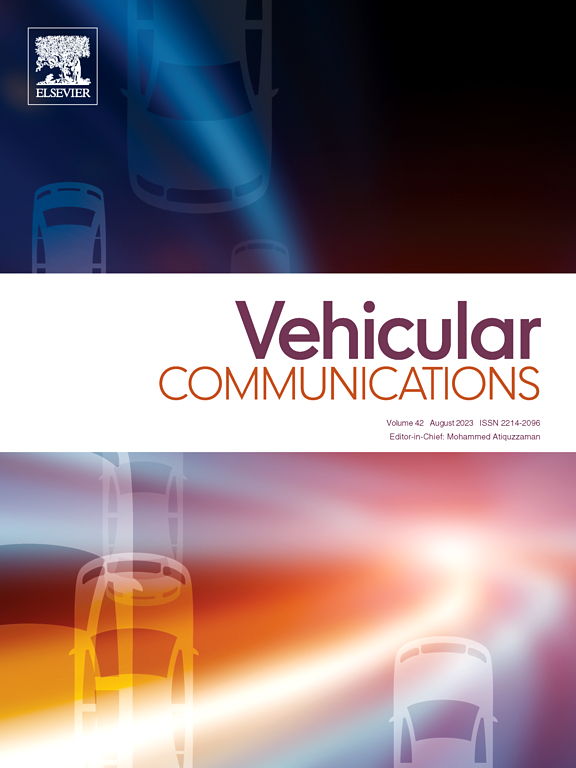Geometric Optimisation of Unmanned Aerial Vehicle Trajectories in Uncertain Environments
IF 6.5
2区 计算机科学
Q1 TELECOMMUNICATIONS
引用次数: 0
Abstract
The problem of efficient trajectory optimisation for Unmanned Aerial Vehicles (UAVS) in dynamic and constrained environments is one where energy efficiency, spatial coverage, and path smoothness need to be balanced. The existing methods, namely RRT*, A*, and Dijkstra, are popular but generally heuristic and do not provide globally optimal solutions. They face significant limitations while dealing with complex geometries, dynamic obstacles, and multi-objective requirements. These challenges call for a mathematically sound framework that seamlessly integrates convex analysis and computational geometry to provide an optimal trajectory planning framework. This research work introduces a convex optimisation framework for UAV trajectory planning which unifies multiple objectives, like minimising energy consumption, maximising spatial coverage, and ensuring the smoothness of the path, into a single convex objective function. More importantly, it indicates that obstacle dynamics and uncertain environmental conditions are handled better by it, so it is relatively easier for safe and efficient navigation. Proven to converge faster and with higher precision than RRT*, A*, and Dijkstra, the approach proposed here enjoys intrinsic convex properties, which ensure global optimality. Qualitative measurements show the efficiency of the proposed framework. The result is energy efficiency of 90%, with 92% coverage, 98% constraint satisfaction, and 95% path smoothness, which is 15-25% better on all metrics than traditional approaches can offer. By bridging between theory in convex optimisation and practice for solving multi-objective problems in a dynamic setting, this study provides a more robust solution for UAV trajectory planning.
不确定环境下无人机轨迹几何优化
在动态和受限环境下,无人机(UAVS)的有效轨迹优化问题是一个需要平衡能源效率、空间覆盖和路径平滑的问题。现有的方法,即RRT*, A*和Dijkstra,是流行的,但通常是启发式的,不能提供全局最优解。在处理复杂的几何形状、动态障碍物和多目标要求时,它们面临着显著的局限性。这些挑战需要一个数学上合理的框架,无缝集成凸分析和计算几何,以提供最佳的轨迹规划框架。本研究提出了一种用于无人机轨迹规划的凸优化框架,该框架将能量消耗最小化、空间覆盖最大化、路径平滑度最大化等多个目标统一为单个凸目标函数。更重要的是,它能更好地处理障碍物动态和不确定的环境条件,相对容易实现安全高效的导航。与RRT*, A*和Dijkstra相比,本文提出的方法收敛速度更快,精度更高,具有内在的凸性,确保了全局最优性。定性测量表明了该框架的有效性。结果是90%的能源效率,92%的覆盖率,98%的约束满意度和95%的路径平滑度,在所有指标上都比传统方法好15-25%。通过将求解动态环境下多目标问题的凸优化理论与实践相结合,本研究为无人机的轨迹规划提供了更为鲁棒的解决方案。
本文章由计算机程序翻译,如有差异,请以英文原文为准。
求助全文
约1分钟内获得全文
求助全文
来源期刊

Vehicular Communications
Engineering-Electrical and Electronic Engineering
CiteScore
12.70
自引率
10.40%
发文量
88
审稿时长
62 days
期刊介绍:
Vehicular communications is a growing area of communications between vehicles and including roadside communication infrastructure. Advances in wireless communications are making possible sharing of information through real time communications between vehicles and infrastructure. This has led to applications to increase safety of vehicles and communication between passengers and the Internet. Standardization efforts on vehicular communication are also underway to make vehicular transportation safer, greener and easier.
The aim of the journal is to publish high quality peer–reviewed papers in the area of vehicular communications. The scope encompasses all types of communications involving vehicles, including vehicle–to–vehicle and vehicle–to–infrastructure. The scope includes (but not limited to) the following topics related to vehicular communications:
Vehicle to vehicle and vehicle to infrastructure communications
Channel modelling, modulating and coding
Congestion Control and scalability issues
Protocol design, testing and verification
Routing in vehicular networks
Security issues and countermeasures
Deployment and field testing
Reducing energy consumption and enhancing safety of vehicles
Wireless in–car networks
Data collection and dissemination methods
Mobility and handover issues
Safety and driver assistance applications
UAV
Underwater communications
Autonomous cooperative driving
Social networks
Internet of vehicles
Standardization of protocols.
 求助内容:
求助内容: 应助结果提醒方式:
应助结果提醒方式:


